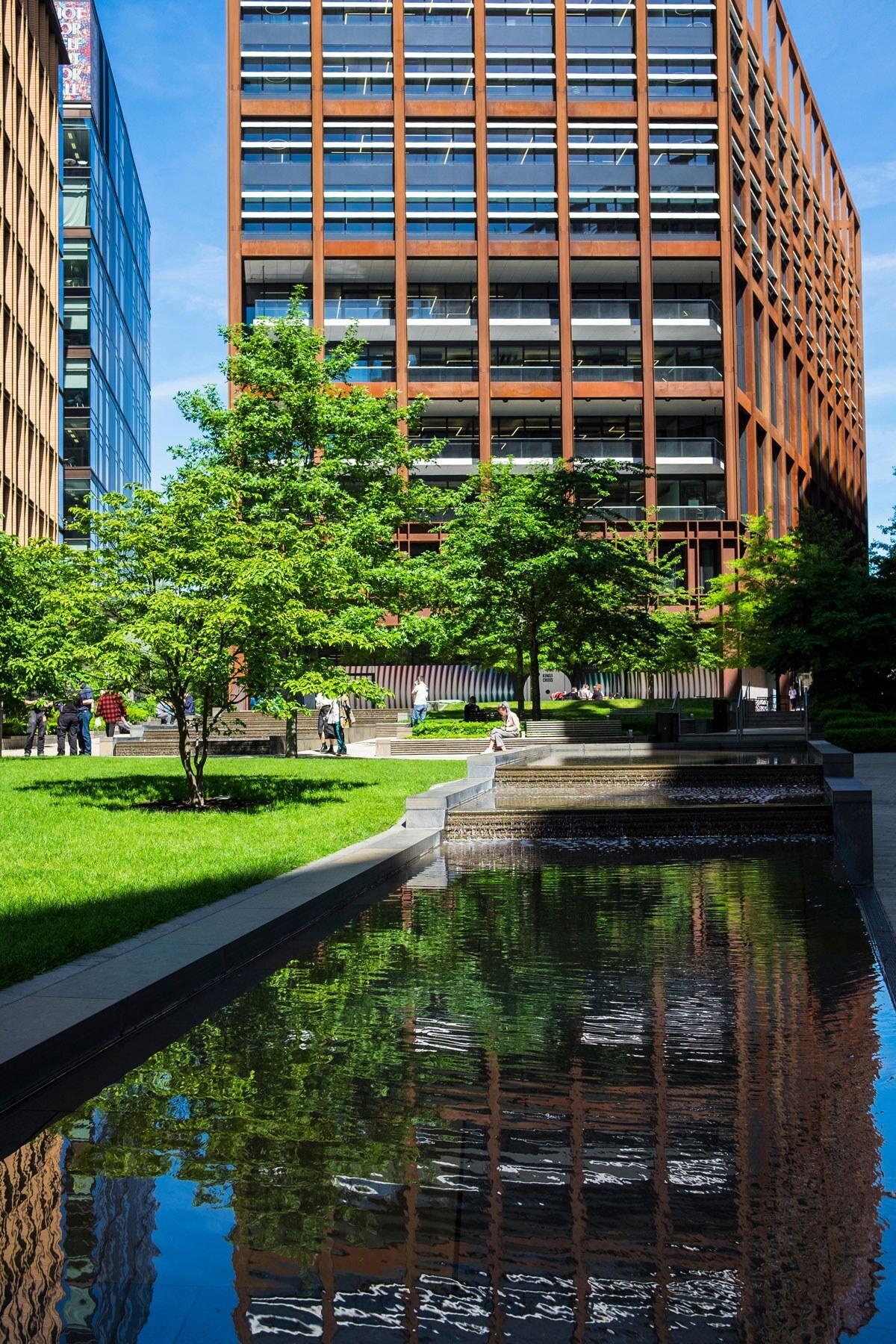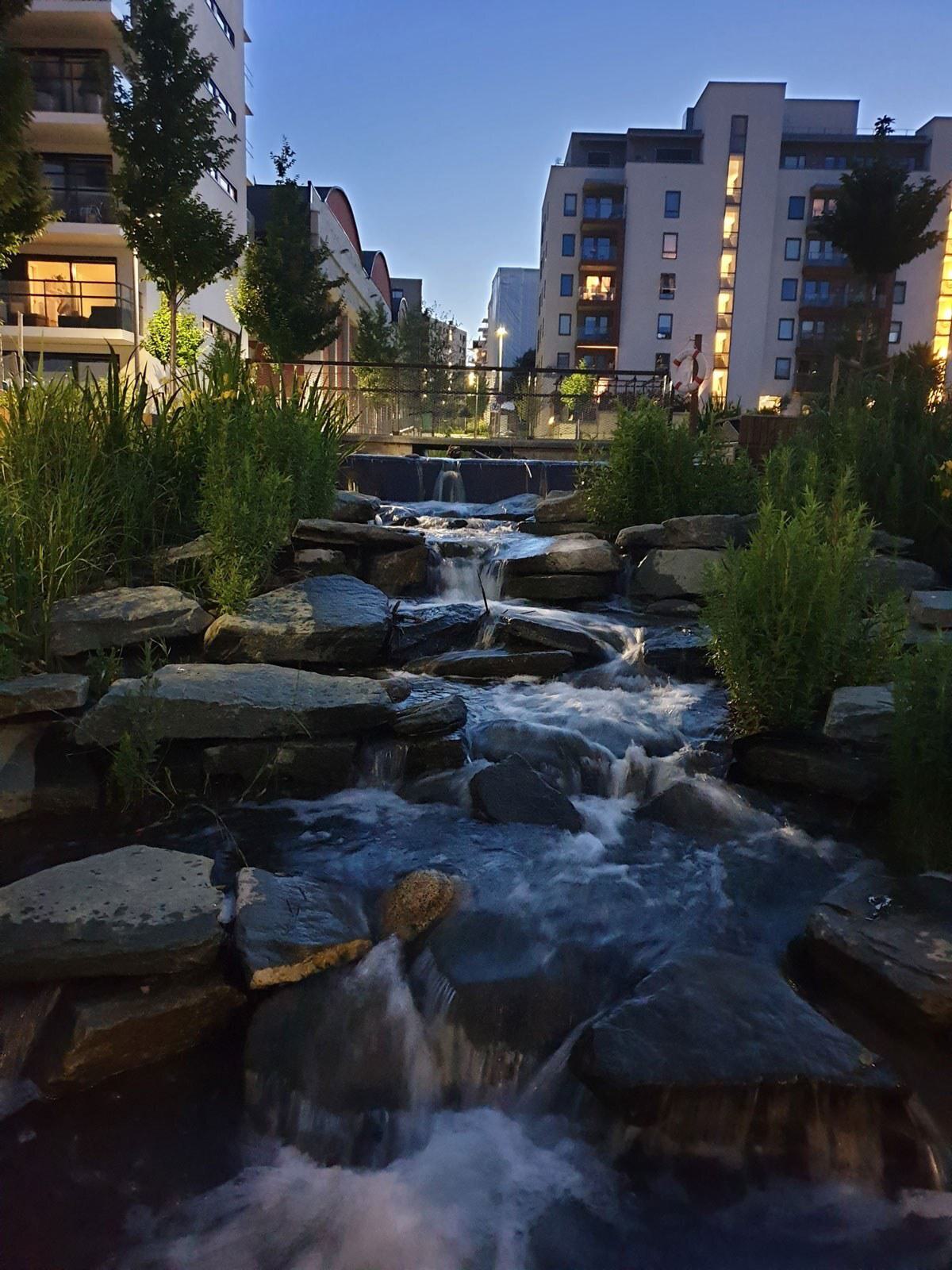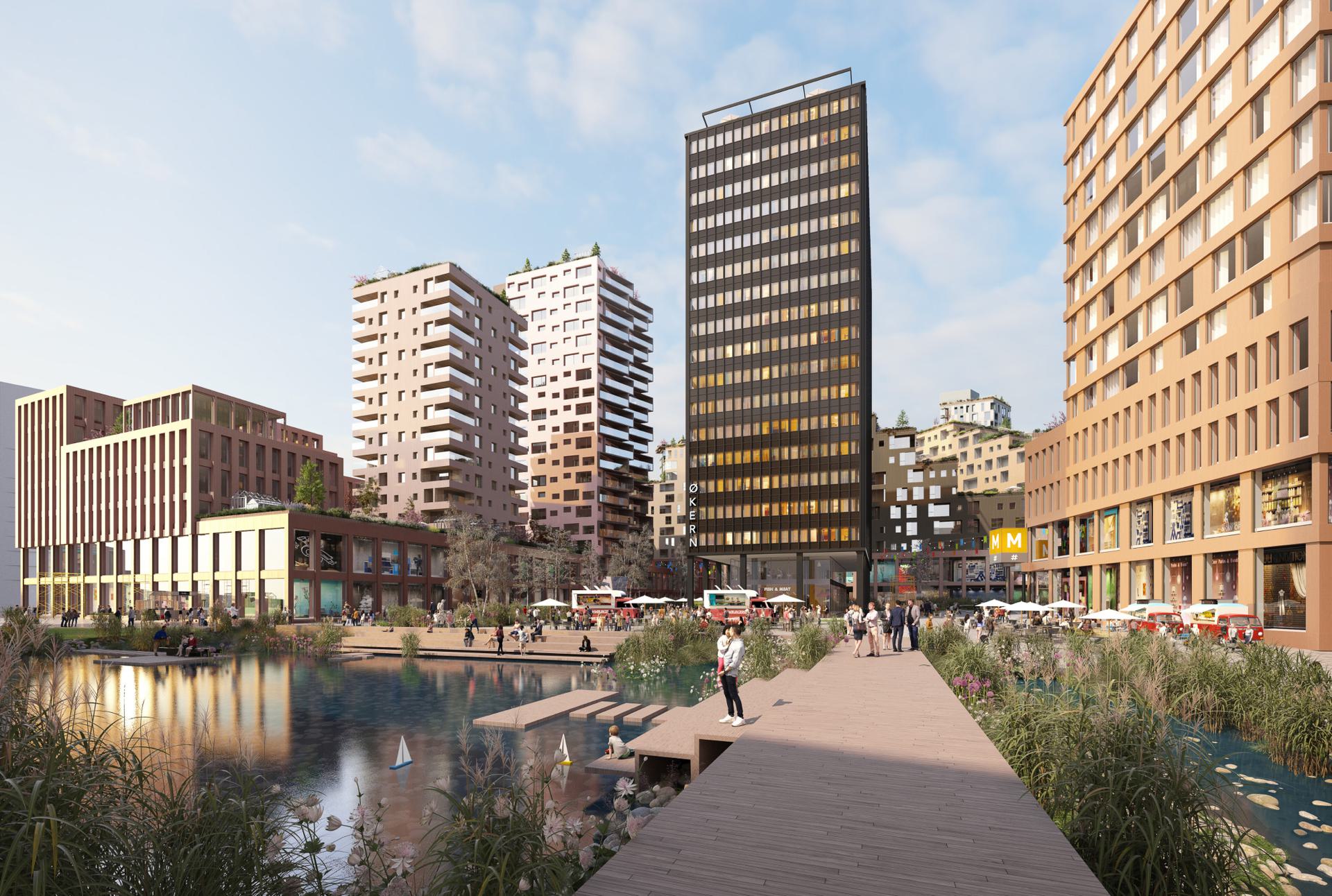The Hovinbekken and Refstadbekken streams have been hidden underground in pipes for several decades. Following the input of residents, changes to the plan for Økern, and the emphasis on cultural heritage, the streams will be opened up again and allowed to see the light of day.
Hovinbekken runs from the Risløkka/Bjerkedalen valley and gives life to a neighbourhood square before crossing the Ulvenveien thoroughfare and joining Refstadbekken by the high-rise block. Here, the streams will play a pivotal role in invigorating and raising biodiversity in the main square before flowing south towards Hasle. The reopening of the streams will allow people to get closer to nature in the new urban Økern Sentrum.
Expensive work
The reopening of the Hovinbekken and Refstadbekken streams is complex and expensive. Nevertheless, the benefits that these streams will provide in the residential areas and urban spaces are so significant that the work is seen as pivotal in the development of east Oslo. In addition, their opening will recreate Økern’s history and aid the preservation of cultural monuments, which is important in the new plans.
There is a political objective to reopen as many of Oslo’s encased streams and rivers as possible. According to the Oslo Urban Environment Agency, 70 percent of them are covered in some form.
In 2020, Norconsult and Bjørbekk & Lindheim completed an outline project for the Oslo Urban Environment Agency. The aim of the outline project was to assess the possibility of reopening the Hovinbekken stream from Risløkka down to the Tennisdammen lake at Hasle, which is where Hovinbekken currently re-emerges into the open. The project group made a clear recommendation to choose the option that involves opening the streams through Økern Sentrum. The plan for reopening the streams in Økern largely follows the Oslo Urban Environment Agency’s outline project.
“We’re proud that, through our innovative thinking for Økern Sentrum, it’s been possible to reopen streams that have been encased in pipes for such a long time,” says Thomas Holth.

A temporary course
The development of Økern Sentrum will take time, as will the reopening of the two streams. Although the streams are currently encased, their courses through Økern can already be traced. The project Bekk to the Future (“bekk” meaning “stream” in Norwegian) allows you to follow a marked and uninterrupted walkable route between the open sections of the Hovinbekken stream from Risløkka to Hasle. This has been made possible thanks to three students at the University of Oslo and the Norwegian University of Life Sciences (NMBU), who produced the project as part of CityStudio Oslo. The first part of the route opened in December 2020 and runs through Økern Sentrum.
The project was initiated to make it easier for people in the local area to get around. The students noticed that Hovinbekken could serve as the connection that’s currently lacking in Hovinbyen. The project has now turned into a 1.4-kilometre route that runs through various parts of Økern. The students have structured the route so that it follows the future course as closely as practicable. They have chosen the most efficient route that is close to public transport and where people already walk.
Bekk to the Future is a collaboration between the Oslo Urban Environment Agency, Økern Sentrum, and the Oslo River Forum. The students want to demonstrate that the stream can be the connection that Hovinbyen needs. The Økern project wants to facilitate this by reopening the streams in the future.



 Like us on Facebook
Like us on Facebook Follow us on LinkedIn
Follow us on LinkedIn Follow us on Instagram
Follow us on Instagram